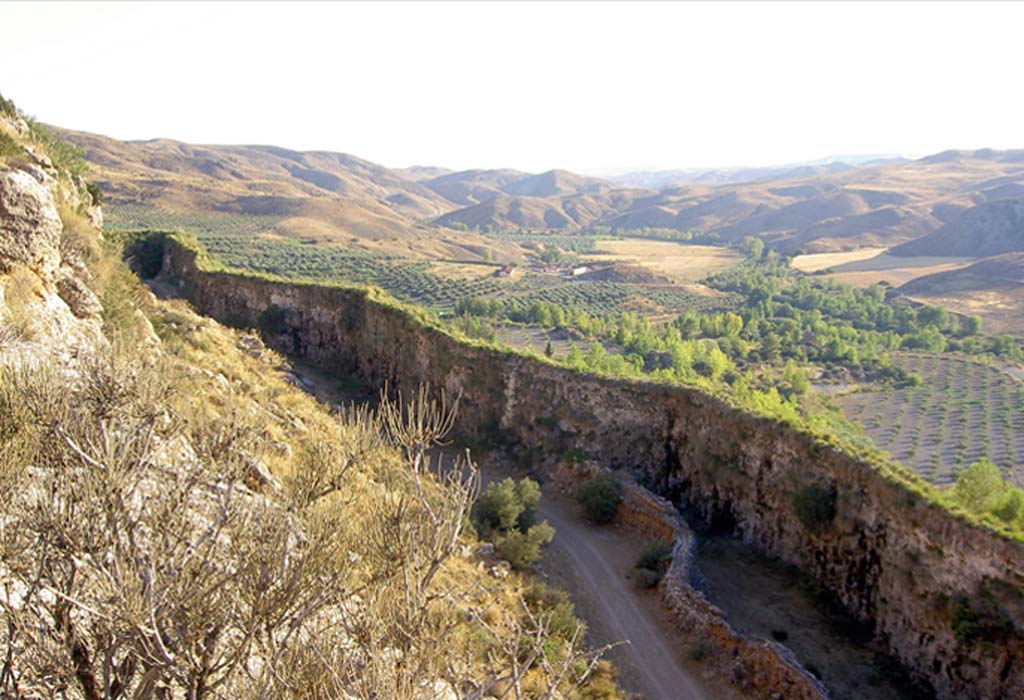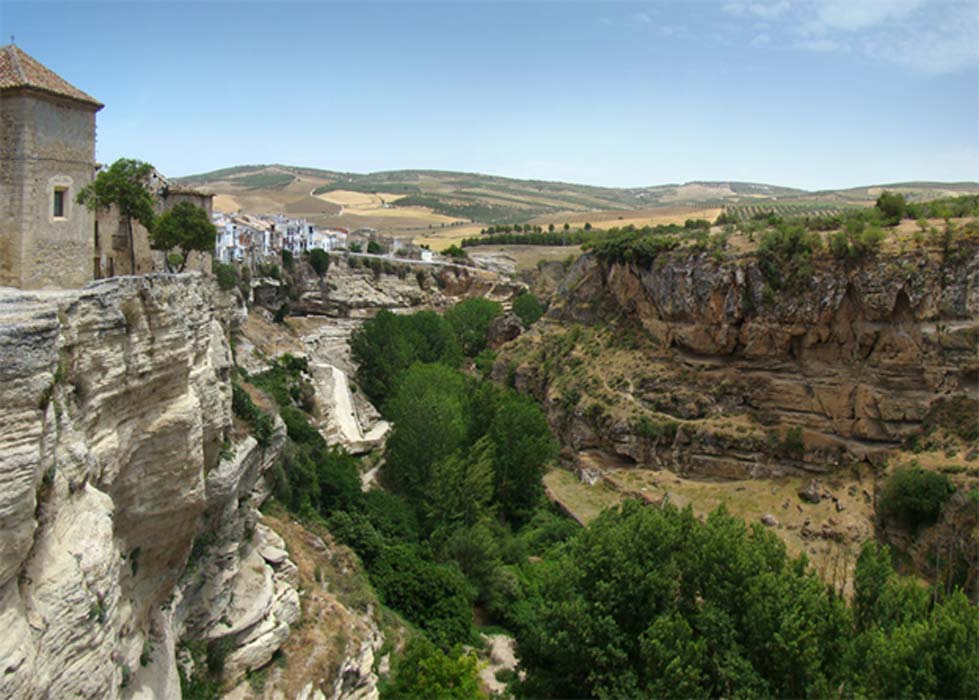
An Enigma Wrapped in a Mystery: The Living, Growing Aqueduct of Alicún de las Torres, Granada
Not far from the Moorish splendors of the Alhambra in Granada, Spain, and close to the troglodyte cave-dwellings of the residents of Guadix, is the spectacular, living, El Toril Aqueduct. It is located across the road from the popular rural Hotel Balneario (Spa) de Alicún de las Torres, which utilizes the same warm medicinal waters carried by the aqueduct for its healing baths, treatments, and outdoor pools.

View over the gorge of Río Alhama. (Tango7174/CC BY-SA 4.0)
This living, growing aqueduct is a unique water conduit, approximately 15 meters (49 feet) tall at its highest point, over three meters (10 feet) thick at its widest, and nearly a kilometer-and-a-half (0.85 mile) long. Its imposing walls are covered in exuberant vegetation—grasses and ferns, roots and vines—that make the aqueduct look like a veritable hanging garden.
How could such an amazing formation come to be? Juan Sáez, a specialist in geomancy and earth mysteries, has researched the site extensively. He explains that the design and layout of the aqueduct are human, but the construction itself depends on nature. A simple sinuous furrow, scratched into the earth with a tool, or perhaps with a hand or foot, was the starting point for the creation of the aqueduct. This unpretentious furrow formed the channel through which mineral water from the nearby thermal springs began to flow. The wavy shape provided stability, resiliency, and helped to slow the rush of water.
The Spring Waters Sustain Life
The spring water comes out of the ground at 34.5°C (94°F) and is laden with calcium sulphate and magnesium bicarbonate. Over the years, the generations, the centuries—the millennia—the precipitation and sedimentation of mineral salts gradually caused the curving channel to solidify around the edges and very, very slowly to rise in height. Seeping and overflowing water helped it to expand in width. This created El Toril Aqueduct: an immense travertine wall that continues to grow.
Perhaps 20-25 percent of the water that enters the aqueduct filters through the mineral walls and makes the vertical garden possible. An assortment of specially adapted vegetation thrives on the damp, drippy sides, and when they die, they “calcify” and thicken the accretions on the walls. The endemic plant Limonium Alicunense is only found on the aqueduct; it has mutated over untold hundreds of years and requires the salinity of the mineral water to survive.

Photo of a related Limonium plant which thrives in saline conditions, Limonium perezii at the San Francisco Botanical Garden. (Stan Shebs/CC BY-SA 3.0)




